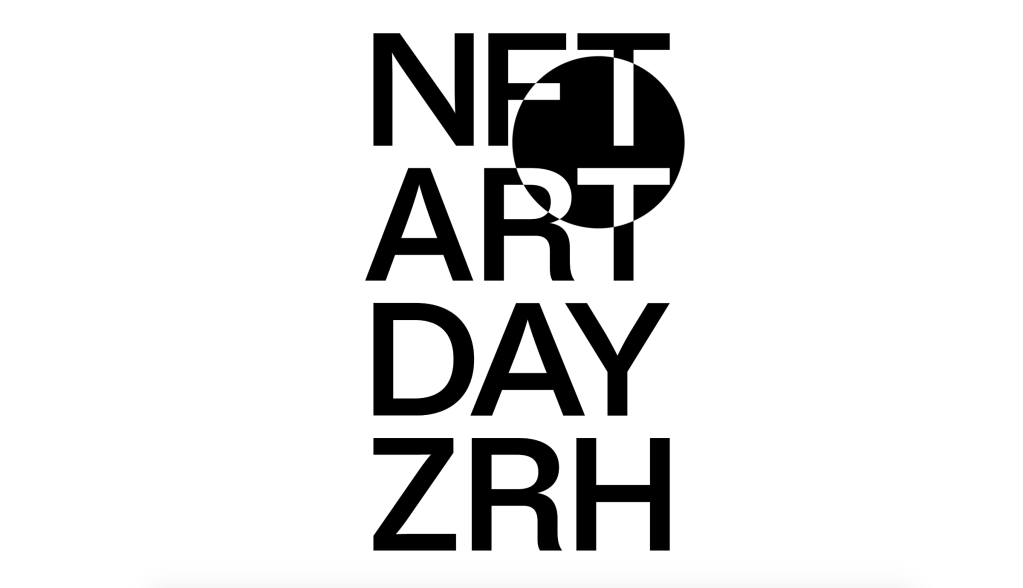By Shanti Escalante-De Mattei
The weekend before Art Basel kicked off, Engadin Art Talks (E.A.T) hosted NFT Art Day Zurich, inviting digital artists, NFT collectors and entrepreneurs to discuss NFTs with a crowd of art world denizens.
“Having run Engadin Art Talks for eight years I know it’s amazingly valuable to meet and speak with artists and get to understand the ideas behind their work and their projects. I felt that was even more important in the digital art context,” Katharina de Vaivre, who co-founded NFT Day Zurich and is the managing director of E.A.T., told ARTnews.
blogherads
.defineSlot( ‘medrec’, ‘gpt-dsk-tab-mid-article1-uid0’ )
.setTargeting( ‘pos’, [“mid-article1″,”mid”,”mid-article”,”mid-articleX”] )
.setSubAdUnitPath(“ros/mid-article”)
.addSize([[2,2],[300,250],[300,251]])
;
});
Over the course of the day, five conversations took place, including a short keynote speech by Kenny Shachter — who we previously profiled in this publication — a dialogue on the philanthropic potential of NFTs, collecting NFTs, and conversations with digital artists about their practice.
Throughout the day there was a constant push and pull as that essential question remained on the bewildered art crowd’s mind: Are NFTs art? And this is, unfortunately, not the correct question to ask, given that NFTs are a technology that can be applied to a range of media, whether its visual art, music, or even event tickets.
This is a point de Vaivre herself was clear on, as she noted in her opening remarks: “Most people only know about Bored Apes and Crypto Punks, but we want to have a critical dialogue about NFTs as media for art.”
To create some clarification, artists like Kevin Abosch and Sarah Friend went into their art practices during the panel “On NFTs and the Value of Art”. What they described was a kind of ethic and discourse that the art world expects from artists. But what made their conversations interesting was how deeply embedded their practices are to the questions that plague both the art and NFT space.
For Abosch, the discursive issues around NFTs aren’t dissimilar to what he had experienced in his career in the traditional art world after his work started going for millions of dollars.
“I felt commodified because I wanted to talk about the intrinsic value of my work and they wanted to talk about its monetary value,” he said.
Abosch, who has spent much of his career making work about the value of things, felt that with NFTs his work had become more relevant than others, especially as he had already been playing with blockchain technologies in the past, as he did with his project ‘IAMA Coin”(2018) in which he created a kind of Abosch-centered crypto coin.
Friend, for her part, is focused on creating anti-speculative, cooperative games that aim to undo the problematic issues in the NFT market, but which also map on quite well onto the traditional art market. With her NFT project Lifeforms, the NFT has to be transferred or sold every 90 days.
“This is fundamentally opposed to the way the market works now, which is that you hold onto a work hoping it will increase in value,” she said.
de Vaivre felt that the aim of putting together the art world and the NFT world had been a successful endeavor, saying, “We were very happy with our attendance because we had digital and traditional artists, some of the top Swiss and international collectors, as well as NFT collectors, curators. People came from all over Europe to finally meet these artists.”
Some NFT collectors in attendance included Joe Hague and Robert Norton alongside traditional art collectors like Maja Hoffmann, Uli Sigg and Cristina and Thomas Bechtler.
But as much as these types of conferences are pegged as a way for the art world to catch up and understand this brave new world, it was also a networking event. Art Blocks CEO Erick Calderon, for his part, couldn’t walk two steps without having the face of a new European Web3 startup offer him a business card and a short pitch. Towards the end of the conference, there seemed to be equal amounts of people chatting outside as there were attendees in the audience.
During the panel Collecting Digital Art, which included figures like Calderon and Aorist CEO Patrick Foret (formerly a Director of Business Initiatives at Art Basel) one audience member got up to ask, “Is this a real discussion or are we just rationalizing our greed?” That is, was all this discursive work in true pursuit of understanding art, or was it just meant to legitimize a potential business opportunity?
The panel members had a few different responses.
Foret said, “We are witnessing a battle between two titans: the art world, which defines what art is, and the tech world, which is shaking these foundations. Hopefully the titans can stop fighting and make love instead.”
Calderon, for his part pointed out that critique is of course necessary, “We can’t reduce this as being one thing or the other.”
The discourse seems nonstop. Following NFT Day Zurich, Art Basel itself has a lot of NFT programming, including a series of talks hosted by Tezos, a cryptocurrency that is doing quite well during the slump as it’s a more affordable and eco-friendly infrastructure, as well as a smattering of other events, like the Pace x Art Blocks programming.
And it doesn’t stop here. Next week, from the 20th to the 23rd, NFT.NYC, an NFT conference, these conversations will continue. But this time, it’ll be on the home turf of the Web3 kids.
The World's Premier Art Magazine since 1913. Subscribe today and save up to 33%!
Sign Up for our Newsletters
Get our latest stories in the feed of your favorite networks
We want to hear from you! Send us a tip using our anonymous form.
Subscribe to our newsletters below
ARTnews is a part of Penske Media Corporation. © 2022 Art Media, LLC. All Rights Reserved.


